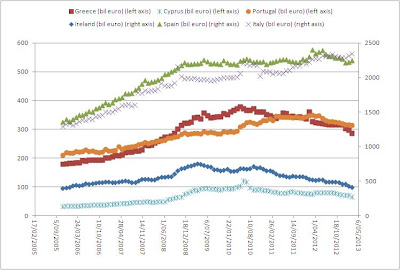The gold price has always followed the marginal cost of suppliers throughout history ( Figure 1 ). The correlation between gold prices and gold mining cash costs between 1980 and 2010 stood at 0.85, which is pretty highly correlated (Source: CPM Gold Yearbook 2011). With the price of gold at $1400/ounce today I'm pretty sure we can't go much lower if this correlation proves to be correct (Chart 1). Chart 1: Marginal cost suppliers of gold (Source: Eurekareport) If we only look at the cash operating costs, we have this picture (Chart 2): Chart 2: Production cash cost Let's analyze these charts further. While cash operating costs only went up a little bit to $700/ounce (Chart 2), the total marginal cash costs went up to $1300/ounce in 2013 (Chart 1). So the biggest move in total cash cost came from overhead, discovery, construction and sustaining capital. In the 1980's, we see that cash operating costs contributed the most in the total cost of mining, but today, the bigge...






